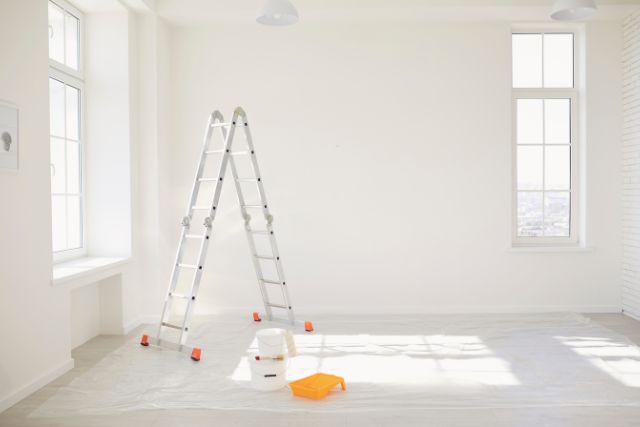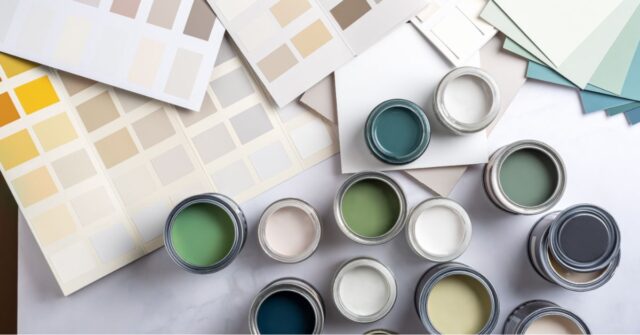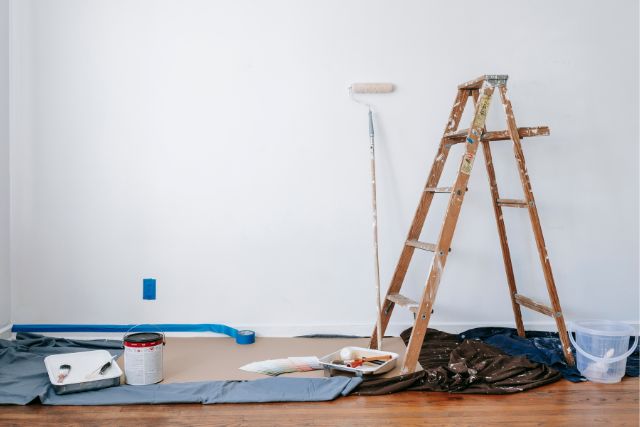For Australian property owners, especially those in the bustling city of Sydney, understanding the local climate’s impact on household tasks is essential.
One such task is painting, where factors like humidity play a significant role.
This guide will delve deep into the relationship between humidity and paint drying time, specifically tailored for Sydney’s unique climatic conditions.
The Basics of Paint Drying
Before diving into the specifics, it’s vital to understand how paint dries and the numerous factors that influence this process.

How Paint Dries: A Quick Overview
Paint drying is not just about the liquid turning solid. It involves a series of physical and chemical reactions.
As fresh paint dries, the solvents or water in the paint evaporate, leaving behind a solid film. This transition is affected by temperature, air circulation, and, importantly, humidity.
Factors Affecting Drying Time
Several elements can influence paint drying time, including paint type, application thickness, surface material, and external conditions like temperature and humidity.
In some scenarios, direct sunlight or shaded areas might also play a role in how fast or slow the paint dries.
The Science Behind Humidity and Drying
Humidity’s impact on paint drying is rooted in science. Let’s unravel the concepts behind this phenomenon.
What is Humidity?
At its core, humidity refers to the amount of water vapour in the air. Represented as a percentage, it indicates the quantity of water the air holds relative to the maximum it could hold at that temperature.
Higher percentages mean more moisture, which can impact several processes, including paint drying.
How Humidity Influences Evaporation and Drying
High humidity levels can drastically slow down the drying process of paint. The more moisture in the air, the harder it is for the paint’s solvents or water to evaporate.
This can lead to longer drying times, drips, or even a failure to set properly. Conversely, too low humidity can cause paint to dry too quickly, leading to brush marks and uneven coating.
Understanding Sydney’s Climate
Sydney, being one of Australia’s iconic cities, boasts a unique climate profile that affects every painting project.

Sydney’s Distinct Seasons
Sydney experiences a temperate climate with warm summers and mild winters. While the summer months can bring higher humidity levels, especially in the mornings, winters are generally drier.
These seasonal changes can influence the best times for painting projects.
Humidity Trends in Sydney
Throughout the year, Sydney’s humidity can vary, with December to February being the most humid months, often reaching upwards of 65%.
Contrastingly, the drier months, like August, can see average humidity levels drop to around 49%.
Real-life Implications for Property Owners in Sydney
For Sydneysiders looking to refresh their properties with a new coat of paint, understanding the city’s climate is a game-changer.
The Challenges of Painting in High Humidity
Painting during Sydney’s humid months can pose challenges. From longer drying times to the risk of mould growth on wet paint, there’s a lot to consider.
Additionally, high humidity can cause paint to bubble or blister, ruining an otherwise smooth finish.
Best Seasons for Painting in Sydney
Given the humidity trends, the ideal months for painting in Sydney would be during the transitional periods of spring and autumn.
These seasons offer balanced conditions with moderate temperatures and humidity, ensuring a smoother painting experience.
Practical Tips for Painting in Varying Humidity
Regardless of when you decide to paint, always check the day’s humidity levels.
If it’s a humid day, consider using slow-drying paint, ensuring adequate ventilation, and avoiding painting during the early mornings when humidity is often at its peak.
On drier days, avoid direct sunlight to prevent overly rapid drying.
Selecting the Right Paint for Sydney’s Climate
Choosing paint goes beyond colour selection. For Sydney’s climate, certain paints can offer better results.
Types of Paints and Their Responses to Humidity
Water-based paints, commonly used for interiors, dry through evaporation and can be affected significantly by high humidity.
Oil-based paints, on the other hand, dry through oxidation and might be a better choice for humid conditions. However, always check the manufacturer’s recommendations for optimum conditions.

Top Recommended Paints for Sydney Homes
Several brands cater specifically to Australian conditions. Brands like Dulux and Taubmans offer paints designed for the Australian climate, with some ranges even catering specifically to high-humidity areas.
Tools and Techniques to Combat Humidity’s Effects
With the right tools and techniques, Sydney homeowners can navigate the challenges of humidity.
Using Dehumidifiers
For indoor painting projects during humid months, using a dehumidifier can be beneficial. By reducing the moisture levels in the air, paint can dry more effectively, ensuring a smoother finish.
Effective Ventilation Strategies
Good airflow can assist in the evaporation process. Using fans or ensuring windows and doors are open can make a significant difference in drying time and finish quality.
Monitoring Humidity During Painting Projects
Invest in a reliable hygrometer to keep tabs on indoor humidity levels. This small tool can help you decide if conditions are right for painting or if you should wait for a more opportune moment.
Common Mistakes and How to Avoid Them
Even with the best intentions, mistakes can occur. Let’s identify common pitfalls and how to sidestep them.

Painting During Rainy Seasons
It might seem obvious, but painting exteriors just before or during rain can lead to disaster. Apart from extended drying times, rain can wash away wet paint, leading to streaks and patches.
Not Accounting for Dew Point
The dew point, or the temperature at which air becomes saturated with moisture, can affect paint application. If the surface temperature is close to the dew point, dew can form on the surface, complicating the painting process.
Overlooking Surface Preparation
Irrespective of humidity, proper surface preparation is crucial. Cleaning the surface, priming, and ensuring it’s free from moisture are essential steps for a lasting paint job.
Conclusion: Achieving the Perfect Paint Job in Sydney
Humidity plays an undeniable role in the outcome of a painting project, especially in a city like Sydney with its distinct climate variations.
By understanding and navigating these challenges, homeowners can achieve impeccable finishes, adding value and vibrancy to their properties.

Quick Recap on Humidity’s Impact
From affecting drying times to the finish’s quality, humidity is a crucial factor every painter in Sydney needs to consider.
Balancing the right tools, paint type, and painting conditions can lead to optimal results.
Final Tips for Australian Property Owners
Always monitor the weather and humidity levels, invest in the right tools, and never rush a painting project. With patience and knowledge, every paint job can become a masterpiece.





